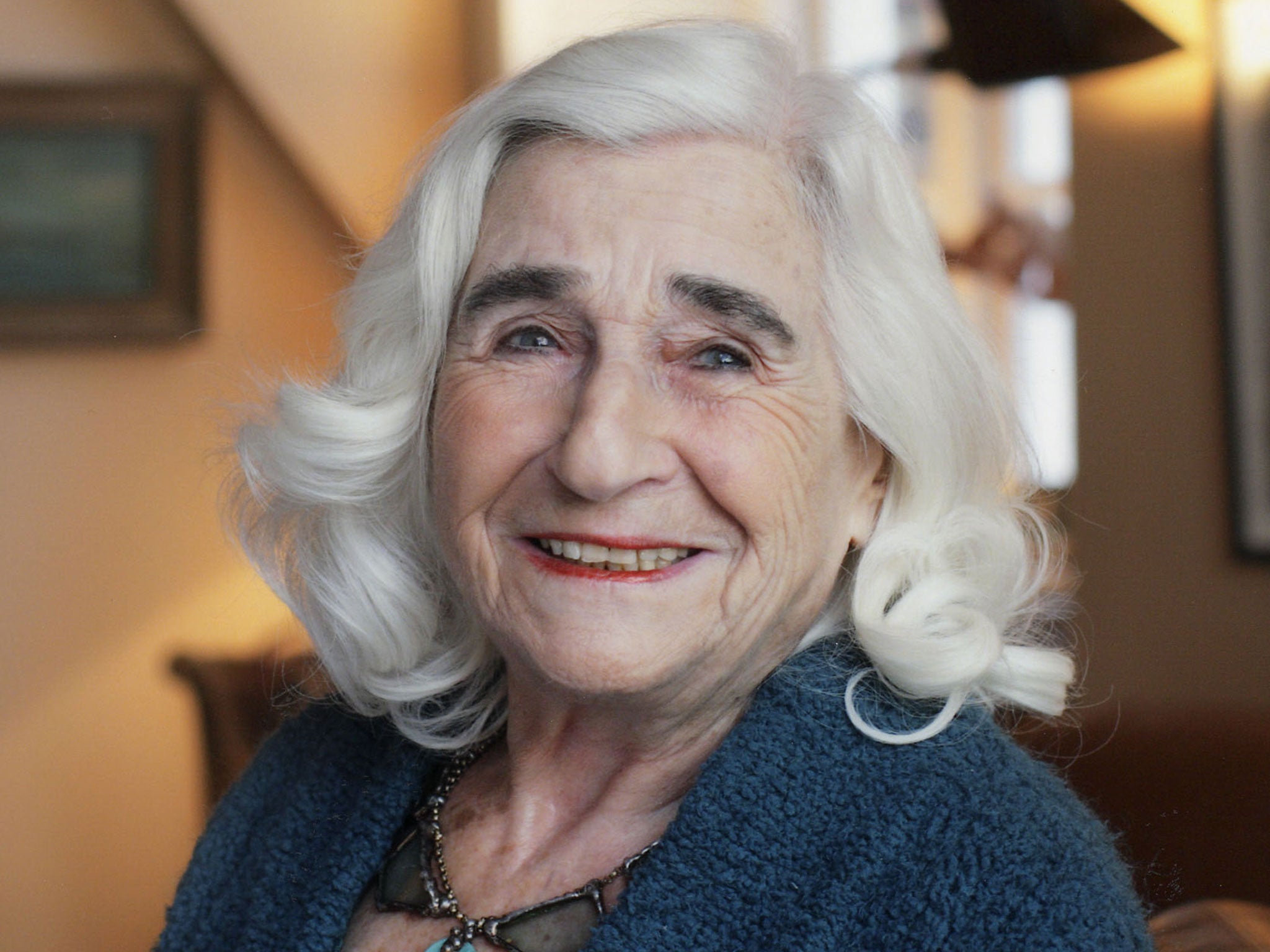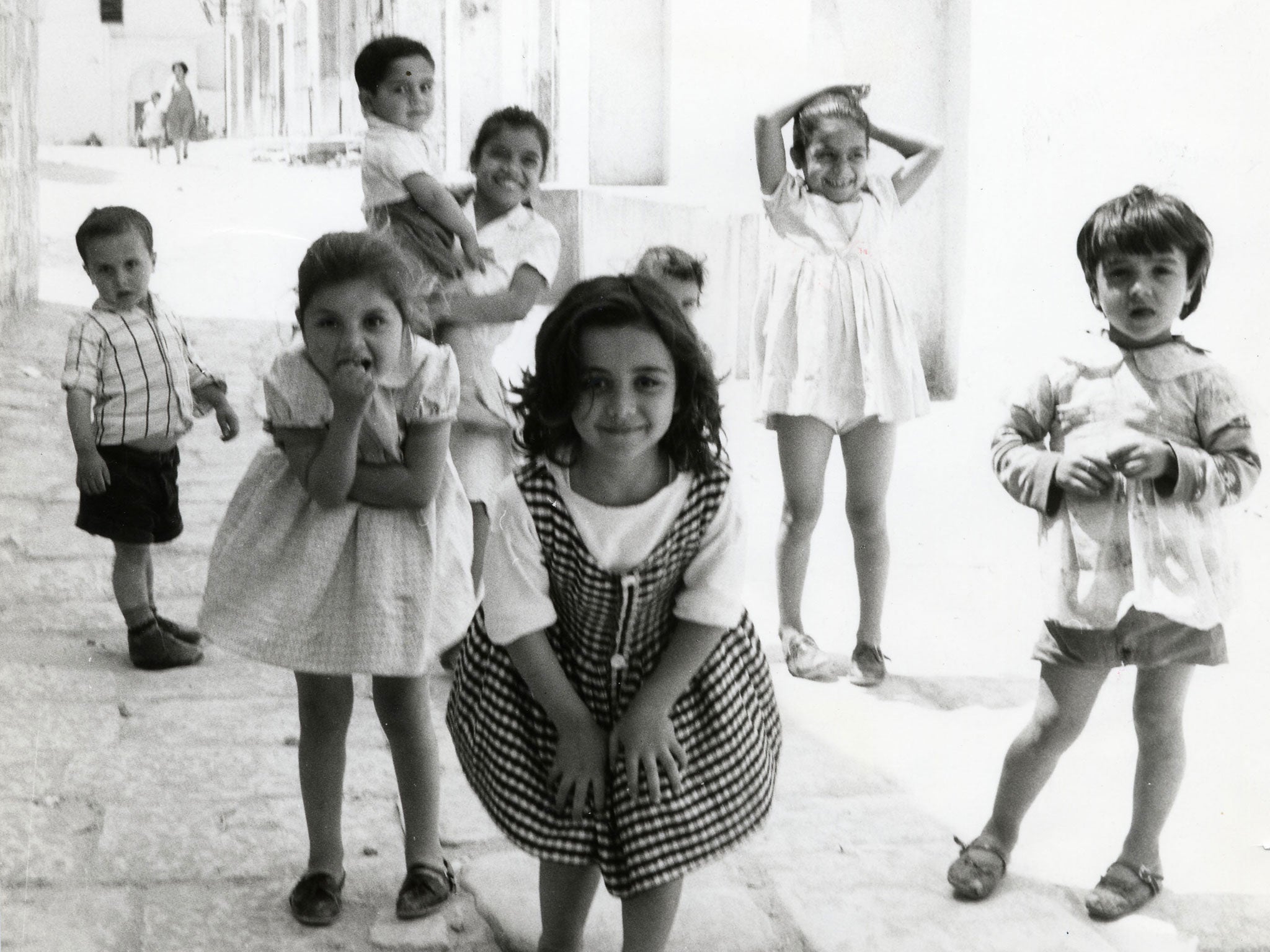Dorothy Bohm interview: 91-year-old photographer on portraying humanity and hope after escaping the Nazis as a teenager
The co-founder of London's Photographers' Gallery is now taking part in an exhibition of migrants' art at Somerset House

At 91 years old, Dorothy Bohm is tiny and elegant with thick white hair styled into a neat bob, around curious dark eyes that closely examine whoever enters her Hampstead home. She speaks clearly, with a soft accent that bears the trace of her childhood years in Germany and Lithuania, which she left aged 14, as the Nazis moved in.
Hers is a remarkable story. Brought up with a nanny and governess, part of a cultured family, with a father who was a wealthy industrialist. From this comfortable life, she arrived alone in England, a young Jewish girl, sent away by her father to boarding school in order to avoid Hitler. Had she stayed behind, she would inevitably have disappeared, as her parents and younger sister did. She heard nothing from them for 20 years. “I think I must have a guardian angel,” she says, more than once during our conversation.
As war broke out, she moved to Manchester to study photography. Cut off from the family finances, she had to begin again.
“I was very young, most youngsters still had a home to go to, but here was I trying to live on a very small salary. It was tough.
“I think it was because of my father who believed in women, which meant I never doubted myself. Many of my contemporaries were thinking of marriage and children, not professions, so most of my friends were young men.”
At first it was survival, taking portraits in a photographer’s studio to support her, and her scientist husband Louis while he finished his doctorate. Like her father, her husband also believed in women, told her not to waste her time in the kitchen and encouraged her work. When his job took them abroad, she went with him and began to photograph outdoors on streets all over the world: Paris, Spain, Israel, Greece, America and South Africa. Her early work was black-and-white documentary photography. By 1969, her reputation was such that she had her first exhibition alongside war photographer Don McCullin at the ICA in London. His wall showed images of conflict but hers were of peace.

A small boy in Spain, head tucked in, while he holds a long chain attached to a mule laden with saddlebags. The boy ignores the mule but the mule watches the boy, alert and attentive like a big docile nanny. Lines and shadows arrested in a moment that only gifted observers can see; it’s a touching and visually astute image. Another taken in Haifa, Israel shows Palestinian and Israeli children playing together.
“Quite a lot of photographers go in for things that are sad, war and so on but I couldn’t. Maybe it was escapism but it was due to the fact that I knew what it was like,” she says. She wanted her pictures to be about humanity and hope.
“I feel that we need things that somehow make us believe in humanity, and that’s why I photograph the way I photograph. I try to find a certain dignity.
“Portraits were easy for me because I always thought there was something beautiful in every person.”
One of the remarkable things about Bohm, and she is remarkable in many ways, is that throughout her life she has continued to experiment and explore. “I’m a restless person,” she says. In 1971, she set up the Photographers’ Gallery with Sue Davies against advice from everyone who said it couldn’t be done. Her husband agreed that on paper it was impossible – but told her to go for it anyway.
“Photography was my life, and I thought it would be wonderful. Sue Davies started the gallery, I was associate director and it was an amazing success from the beginning,” she say.
She became friends with photography’s greats: Bill Brandt, Andre Kértész, Brassaï. She continued to experiment, not just with the subjects she photographed but she also explored form. In the 1980s, as she turned 60, she began to use colour for the first time and her work veered towards abstraction when she began a series in which she photographed torn posters on the streets. Her Torn Poster, London (1984) is of a street poster in a state of decay. In one corner a beautiful woman wears military dress and diagonally opposite it there’s a patch from Picasso’s Guernica with a man’s neck crooked back to exaggerate his open-mouthed scream. Abstract splodges of sky and torn areas complete the image. Bohm waited for these posters to reach just the level of disintegration that she required before photographing them. This image is on show at Somerset House in London, as part of an exhibition to celebrate 100 years of the Ben Uri Gallery.
The exhibition titled Out of Chaos fits perfectly with Bohm’s life and work. It shows the art of migration and of migrants over the past century, from a collection, which began during the First World War with paintings by the disgraced pre-Raphellite Simeon Solomon, and the early modernist David Bomberg. A portrait of Queen Victoria by Solomon Alexander Hart, the first Jewish painter to become a Royal Academican, gives a sense of successful integration. Like Bohm, these artists were forced to begin again, escaping pogroms or Hitler. Also like Bohm, many of them never dealt directly with trauma in their work.
She’s often said of her work that for her it was a way to stop the past disappearing, her photographs preserved the past when history wiped hers away. Twenty years after she left them, her parents returned. The Nazis didn’t get them in the end but the Russians did.
“My father was amazing. He was in one of the worst camps in Siberia; it was 40 degrees below zero for eight months. There were times in the early days when I didn’t know if they were alive, and they didn’t know if the other was alive. And he wasn’t bitter, it was amazing,” she says.
“When I talked to him I wanted to ask questions, then my mother said when he has talked to you he wakes up in the middle of the night and screams so please don’t ask any more questions. I didn’t.”
Bohm still photographs now, not often she points out because it’s intense. Her home is lined with her work, early portraits and snaps of her two daughters and five grandchildren. There are bright landscapes and flowers painted by her father after he came back. “As it happened, my family survived which is extraordinary,” she says. “After what happened in my lifetime, and to me and my family, I just hoped that the world would be a better place, I think we all hoped.”
Out of Chaos; Ben Uri: 100 Years in London is at Somerset House, London, to 13 December
Join our commenting forum
Join thought-provoking conversations, follow other Independent readers and see their replies
Comments